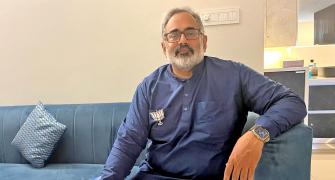Two scientists have identified a fossil discovered in the 1920s as the world's oldest known insect, CNN reports.
The 400-million-year-old specimen had wings suggesting that winged insects, and insects in general, arose much earlier than thought. It also means that the origin of winged insects have been pushed back by at least 80 million years.
The previous oldest known fossils of winged insects are about 320 million years old. DNA evidence suggests insects originated about 434 million years ago.
The fossil is about an eighth of an inch square and was embedded in chert -- a translucent rock.
The discovery was made by David A Grimaldi, curator of entomology at the American Museum of Natural History, and Michael S Engel, University of Kansas. They have reported their findings in Thursday's issue of the journal Nature.
Grimaldi said the insect, which looks like a tiny mayfly, has triangular jaws similar to those found in winged insects.
Other scientists agree the fossil -- of Rhyniognatha hirsti -- is the oldest evidence of insects found to date.
Bill Shear, a professor of biology at Hampden-Sydney College in Virginia, told news agency Associated Press, "We had no idea that insects might have developed wings so early on in their evolutionary history. Either insects have been around for a lot longer prior to this time or wings and flight developed very rapidly after the origin of insects."
The fossil was found in Scotland in the 1920s and was described by an Australian scientist in a 1928 paper as possibly an insect, but he was unable to draw a definitive conclusion.
For more than 70 years, Grimaldi said no scientist bothered to analyse the fossil, which is housed at London's Natural History Museum.
In 2002, while doing research on a book on insect evolution, he and Engel visited the London museum and examined the fossil using a special type of microscope.
"I remember the look on Michael's face and mine when we looked at it. He said, 'Are you seeing what I see? This is incredible!"' Grimaldi said.
Agencies








